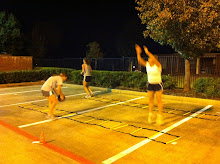
Women want to know why (after dieting and exercising their whole lives) they are hit by a layer of fat right around the belly in their peri-post menopausal years. Whatever you want to call it, muffin top, pot belly, mid-life bulge, or “meno-pot” it just seems that you can’t diet or exercise it off.
It could be said that it’s like chiseling cement. A lot of women begin complaining about abdominal weight gain, along with sleep problems and an inability to focus or concentrate in their 40's, but because they’re still getting their monthly cycles, they don’t attribute it to menopause and hormonal changes.
How Does Hormone Imbalance Create Abdominal Weight Gain?
In a woman’s early to mid-30’s, progesterone levels are the first of the three sex hormones (progesterone, estrogen and testosterone) to decline. In fact, progesterone levels decline 120 times more rapidly than estrogen levels. The result is disequilibrium of estrogen to progesterone medically termed “estrogen dominance.” Too much estrogen with too little progesterone is the culprit responsible for the more subtle (or less well recognized/diagnosed) symptoms of hormone imbalance such as sleep disturbances, foggy thinking, and abdominal weight gain.
So it’s not a figment of your imagination, you’re just losing your much-needed progesterone. When you don’t have enough progesterone circulating, estrogen is the dominant hormone. Estrogen in overabundance makes you angry, edgy, short-tempered, and anxious. At the same time, estrogen increases the water content in your brain making you groggy, fuzzy and unfocused.
Actually, hormone related abdominal weight gain typically begins in the early to mid-30s, coinciding with decline in progesterone production and the incumbent estrogen dominance. Medical research shows that the average woman will gain one to two pounds each year between the ages of 35 and 55 and these pounds will cement around the waist, butt and thighs.
Estrogen dominance is the culprit. To get and keep those pounds off, it is essential that the optimum hormone balance be restored. At this time in your life it is vital that you maintain a healthy diet, and exercise to help balance your bodies hormones.
What Can You Eat to Help Get a Better Hormonal Balance?
Cruciferous Vegetables and Lignans are the top foods to reduce an unhealthy estrogen load. The good news is that there are foods and supplements medically proven to help the body eliminate the extra estrogen. There are two major food groups that can help you deal with the hormones that are causing this and sabotaging your best efforts to be fit.
1. Cruciferous Vegetables:
Cruciferous vegetables are rich in zinc, vitamins A, B, C, D and E and have been regarded for centuries as medicinal foods. This is not just a theory either, scientists have isolated a compound in cruciferous vegetables called Indole-3-Carbinol (I3C).
What does this mean to you? Well, this compound that is especially beneficial to estrogen metabolism. When you eat your cruciferous vegetables the I3C compound combines with the acids in your stomach and creates 3-Diindolylmethane, or DIM. DIM promotes healthy estrogen metabolism which can lead to a better hormone balance.
Cruciferous vegetables include broccoli, cauliflower, cabbage, kale, bok choi, kohlrabi, Brussels sprouts and mustard, rutabaga and turnip greens. Eat 3 to 4 servings of these vegetables each day. Try to eat them raw (or lightly steamed) to ensure all of the nutrients are live and readily absorbed. A single serving of vegetables is generally equivalent to 1/3 cup steamed or 2/3 to 1 cup raw. To add cruciferous veggies to your diet try the following:
• Snack on chopped raw broccoli and cauliflower plain or with simple, tasty nutrient rich dressings
• Eat a large salad full of kale and other cruciferous veggies for lunch or dinner every day
• Have 1 cup of cruciferous veggies with the meal that you don’t have your salad
• For a crispy, salty treat sprinkle sliced kale leaves with sesame salt and roast in a 350 degree until the kale begins to wilt and crisp
2. Lignans:
Lignans are phytoestrogens with estrogenic or anti-estrogenic activity. Lignans may also have antioxidant activity. Plant lignan compounds are converted in the intestine to a form of lignans (enterolignans) the human body can assimilate and use.
Flax seed is highest in lignan content, perhaps the richest source of lignans. Kale, broccoli, apricots, cabbage, Brussels sprouts and strawberries each have 0.2 to 0.8 mg of phytoestrogens called lignans.
• Add ¼ cup flax seed, or one heaping tablespoon, to your low-fat Greek yogurt, cereal, or salad every day.
• Replace your daily serving of breads, crackers, and cereals with products made with Flax Seed.
• Have a 1/3 cup steamed kale, broccoli, cabbage, or Brussels sprouts with your dinner.
• One cup apricots or strawberries for snacks.
Remember, too much belly fat can be a sign of poor health as well, so be sure to get a complete check up by your doctor (including blood tests). Research indicates that belly fat also increases the risk of cardiovascular disease, diabetes, and certain cancers. So, make these dietary changes today.




















No comments:
Post a Comment